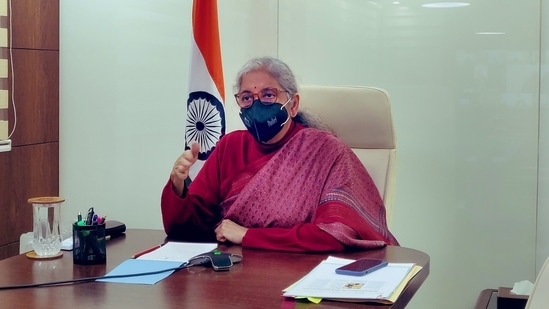Union Budget 2022: India Inc awaits a booster dose to turbocharge growth
Here are a few proposals for the government to for tax relief and to spur demand
As the fourth budget-making exercise of the National Democratic Alliance (NDA) 2.0 gets underway, it is a tight rope walk for finance minister (FM) Nirmala Sitharaman between fiscal expansionism and fiscal prudence, while still sustaining the growth momentum. With Omicron raging, we are in for a below-average fourth quarter due to curbs impacting economic intensity, higher sovereign debt-Gross Domestic Product (GDP) ratios, and the bad loans problem that will get further compounded for the contact-intensive services sector and micro, small and medium enterprises (MSME) struggling to revive.

The foremost prescription, therefore, by the International Monetary Fund (IMF) and economists is that the government should not be in a hurry to rein in fiscal deficit to less than the existing 6.8% of GDP. The suggested glide path for conformity with the Fiscal Responsibility and Budget Management (FRBM) law is to gradually lower the deficit to 4.5% of GDP only by 2025-26. This is vital, as there is a need for sustained and higher public spending to expand the social security net, deploy finances required to fund climate mitigation and transition to green energy, and resources needed to fund employment. The government has more scope to extend relief due to increased buoyancy in revenue receipts, monetisation of assets, and improved effectiveness in targeted public expenditure.
Also, once the Omicron wave ebbs, a virtuous economic cycle is expected to revive as the “balance of risk is tilted towards the lower side”, and the government is better prepared to relatively “pandemic-proof” the economy. Here are a few proposals for both tax relief, and to spur demand:
One, provision higher outlays towards health, education, and upgradation of health infrastructure. Two, extend 15% corporate tax rate to all new investments. Three, offer higher income tax rebates for home loans across the board. Increasing the limit of home loan interest deductions for tax rebate to ₹5 lakh from the current ₹2 lakh; lowering of long-term capital gains tax for real estate; introducing new provisions to encourage rental housing, and according infrastructure status to real estate are some measures that can boost housing demand.
Four, revise annually the limit of standard deductions from the current ₹50,000, which should be enhanced by 20-25% to keep pace with inflation and cover the Covid-19-induced expenses of the salaried classes.
Five, improve the affordability and penetration of health insurance by lowering the 18% Goods and Services Tax (GST) on premiums. As medical inflation rises by 15% annually, it puts the “missing middle-classes” under debt. Affluent people can afford insurance and the rural and urban poor are covered by Ayushman Bharat, but the middle-classes are under-covered.
Six, favour the adaptation to renewables. Offer sops by way of credit at lower interest rates by bringing purchase of “green assets” and electric vehicles under Priority Sector Lending and offer tax concessions for the purchase of equipment.
Seven, incentivise labour-intensive sectors in manufacturing. Due to the capital intensity of production, there is labour stagnation. Large increases in employment in manufacturing are critical for job creation for the under-skilled, undereducated youth who enter the workforce, and who want to transition from agriculture to better-paying jobs in services and manufacturing.
Eight, the gender budget is divided into two parts. Part A, which deals with schemes with 100% allocation for women, has risen by a mere 6.8% in the 2021 Budget, to ₹1,53,326 crore from ₹1,43,461.72 crore. However, the allocation for women-specific schemes, with a minimum 30% allocation for women, has declined by 13%. It is imperative that the allocation for pro-women schemes, which come under Part B, must be made extensively.
Should the FM continue to supercharge the economy through increased public spending, intermittent growth cycles will balance out periods of stagnation and de-growth. If so, despite the odds, India could well be within striking range of the Reserve Bank of India’s projection of 9.5% growth in the current fiscal year, and the finance ministry’s forecast of 7% average annual growth for the next few years.
Bindu Dalmia is ex-chairperson, NCFI, Niti Aayog
The views expressed are personal
Continue reading with HT Premium Subscription




